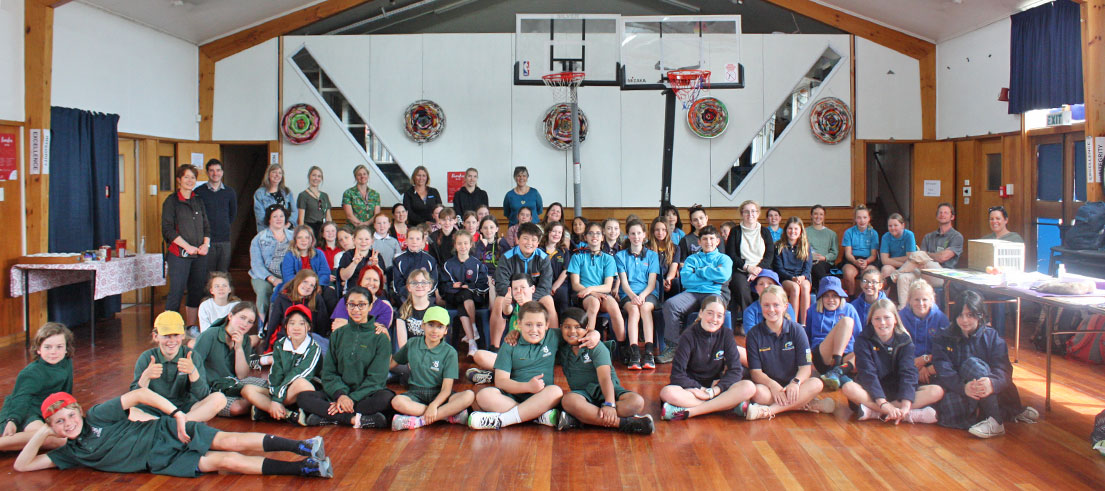
Waitaha students leading the way in sustainability
Enviroschool students across Waitaha recently celebrated their sustainability journeys at Burnside Primary School as part of the annual Enviro-leaders Hui.
About 70 students in year 7 and 8 took part in the day’s activities this term, including a tour of Burnside Primary’s many initiatives, followed by other Enviroschools displaying their own sustainable projects.
Enviroschools Regional Coordinator Andrea Taylor said it was fantastic to see the students take action towards some of our biggest environmental challenges.
“It was a fantastic opportunity for tamariki to bounce ideas off each other and discover other ways to look after our environment,” she said.
“The Enviroschools programme supports tamariki and kaiako to access learning outside of the classroom, creating hands-on opportunities to explore their connection to the whenua.”
Beehives, native nurseries and a butterfly habitat
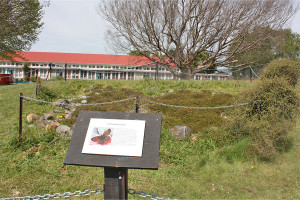
The Boulder Copper Butterfly sanctuary at Burnside Primary School
Led by Bianca Woyak, Burnside Primary School’s HOD Science, an exciting tour of the school’s projects kicked off the day.
These included a Boulder Copper Butterfly sanctuary, two beehives, a native garden and restoration area, and an orchard.
“Our kids brought the Boulder Copper back to Christchurch - our own specific species of butterfly. They were found all throughout Canterbury, but they hadn’t been here for 200 years,” said Bianca.
“The kids really wanted to do something about them because they learnt that these butterflies used to live everywhere, so they made a habitat for them here. We translocated some [from McLeans Island], and now they’ve emerged and are breeding on site.”
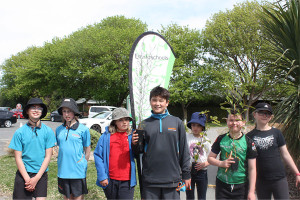
Students came together for the annual Enviro-leaders Hui in Term 4
The students have also been getting hands-on beekeeping experience, learning how to maintain orchard trees, understanding where their fruit and vegetables come from, and growing a native garden area consisting of 2500 trees over the last five years.
Bianca said teaching tamariki about how to interact with these initiatives and why they are important equips them with tools to make a positive difference for our environment.
“It’s about teaching our tamariki the hands-on knowledge they need, to have these outdoor spaces where they can interact with the environment and having an open-ended curriculum on how they’re going to create change,” she said.
“It makes a huge difference, and it makes the kids want to be at school.”
Bianca was awarded the Prime Minister’s Te Puiaki Kaiwhakaaho Putaiao Science Teacher Prize last year for her success in engaging students’ enthusiasm in science, encouraging them to embrace sustainability and to be kaitiaki in their community.
Receiving $150,000 as part of the award, she said $30,000 will go towards new science learning areas, and another $70,000 will be used to renovate the school hall.
What other Enviroschools are up to
Beekeeping
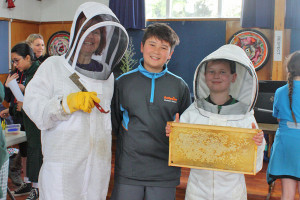
Student Minu Lee (centre) educated others on what it’s like to be a beekeeper
Once the tour ended, the students gathered in the school hall to show off their own projects.
Rolleston School year 7 student Minu Lee brought frames from his family’s beehive to educate others on the importance of bees.
“Most kids are scared of bees, including adults, but they don’t realise how much they do for us - bees pollinate 75 per cent of the world's trees, so we wouldn't be able to breathe. We wouldn’t be able to eat, either, since they pollinate 35 per cent of the world's plants for food,” he said.
“And they're dying out because there are so many mites and diseases. We take so much from them, so I think we should try give back to them.”
Ladbrooks School’s pest control stall
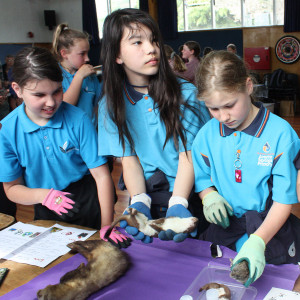
Students getting some hands-on learning at Ladbrooks School’s pest control stall
Ladbrooks School year 8 students Matilda Myers, Poppy Sankey, and year 7 student Declan Henry’s display was all about pest control, including live trap demonstrations, examples of pests, and education around the predator-free NZ vision.
Building the traps themselves, these are put around their school to protect birdlife in the long run.
“We’ve been catching lots of mice and rats. Last year you would see mice running outside the classroom, now you don’t see it much,” said Poppy.
“They eat the eggs of many of our native birds, so we catch these pests in order to have more birdlife around our school,” said Matilda.
About Enviroschools
Enviroschools is a nationwide programme supported by Toimata Foundation, founding partner Te Mauri Tau, and a network of regional partners, including co-ordinating agency Environment Canterbury.
Early childhood centres and schools commit to a long-term sustainability journey where tamariki connect with and explore the environment, then plan, design and take action in their local places, in collaboration with communities.
Bianca encourages other schools to join Enviroschools because “you’re part of a team working towards the same environmental goals.”
“We're going to leave these children in a world that isn't perfect, but you don’t want to freak them out [about climate change],” she said.
“Through Enviroschools, we can make positive change. Present the problems, work with students to solve them, and they’ll leave school feeling more positive about the way things are going.”
